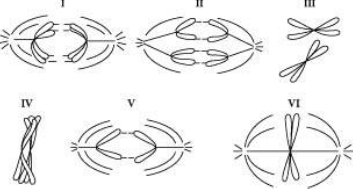Meiosis is a crucial process in sexual reproduction, and it begins with meiosis I, which follows the interphase stage. Interphase consists of three phases: G1, S, and G2. During the S phase, DNA replication occurs, ensuring that each chromosome is duplicated before meiosis begins. After interphase, the cell enters meiosis I, which includes distinct phases: prophase I, metaphase I, anaphase I, telophase I, and cytokinesis.
Meiosis I shares similarities with mitosis, particularly in the structure of its phases. However, it is essential to note that the phases of meiosis I are denoted with a "1" (e.g., prophase I, metaphase I). While prophase I and telophase I exhibit events similar to those in mitosis, the most significant differences arise during metaphase I and anaphase I.
In metaphase I, homologous chromosomes align in the center of the cell in two rows, contrasting with the single-file alignment seen in mitosis. This arrangement allows for the pairing of homologous chromosomes, which is a key feature of meiosis. During anaphase I, the homologous chromosomes separate and move toward opposite poles of the cell, while the sister chromatids remain attached. This is a critical distinction from mitosis, where sister chromatids separate.
Following anaphase I, telophase I occurs, leading to cytokinesis, which divides the cytoplasm and results in two haploid daughter cells. Each of these cells contains half the number of chromosomes compared to the original diploid cell, marking a significant reduction in chromosome number. For example, if the original cell had four chromosomes, each haploid daughter cell will have two chromosomes.
This reduction in chromosome number is vital for maintaining genetic stability across generations. The two haploid cells produced from meiosis I will then proceed to meiosis II, where further division occurs. Understanding the differences between meiosis and mitosis is essential for grasping the complexities of genetic variation and reproduction.


